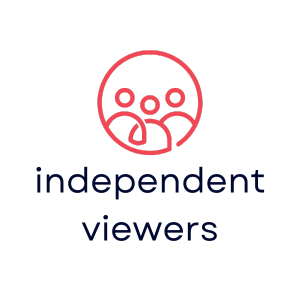In a world where sharing every detail of life is just a click away, many users might be surprised to learn that their social media accounts come with default privacy settings that could use a serious makeover. Imagine posting your vacation photos while leaving the front door wide open—yikes! Most platforms assume you want to share your life with the world, but that’s not always the case.
The Default Privacy and Security Settings for Most Social Media Platforms Are
Many social media platforms set default privacy settings to public, allowing all users to see posts and profiles. Facebook, for example, automatically shares user profiles with friends and friends of friends, making personal information widely accessible. Instagram’s default setting enables public visibility of profiles, inviting any user to view shared content.
Others like Twitter default to public tweets, exposing posts to the entire Twitter community. LinkedIn often showcases profiles to connections and invites broader access to networking opportunities. Users looking for anonymity may find these settings concerning.
Some platforms, including Snapchat, require users to manually adjust settings to limit the audience for their stories. It’s common for default settings to promote engagement, often at the cost of user privacy. Users must actively manage their settings to restrict access.
Privacy settings differ among platforms. TikTok defaults to public accounts, allowing extensive reach unless adjusted. Users of Pinterest might notice a default preference for sharing boards with the community, which can extend visibility beyond intended audiences.
Awareness of these settings remains crucial. Users ought to take time to explore and modify the privacy features according to their comfort levels. Privacy policies consistently evolve, so continuous review of settings ensures alignment with personal privacy expectations.
Common Security Settings Across Platforms

Several social media platforms implement common security settings to enhance user privacy. These settings range from basic password protections to advanced authentication methods.
Password Protection Features
Many platforms require users to create strong passwords. Users often face minimum requirements, such as a combination of letters, numbers, and symbols. Some sites encourage changing passwords regularly, reducing the risk of unauthorized access. Specific platforms allow users to enable alerts for unusual login attempts. Think of strong passwords as the first line of defense against cyber threats.
Two-Factor Authentication
Two-factor authentication (2FA) offers an additional security layer. Most platforms provide 2FA options via text messages or authentication apps. Engaging this setting helps verify user identities during login attempts. Users benefit from added security when accessing their accounts from unfamiliar devices. Opting for 2FA significantly lowers the chances of account compromise.
Privacy Settings By Platform
Default privacy settings vary significantly across social media platforms, impacting how personal information is shared. Users must understand these settings to better manage their online presence.
Facebook initially sets profiles to share information with friends and friends of friends. Users can adjust these settings to limit visibility to only friends or make profiles private. Account holders should regularly review their audience settings for posts, which default to public. Additionally, Facebook allows control over tagged photos, granting users the option to approve tags before they appear on their timeline. Privacy shortcuts provide quick access to settings, making it easier to enhance account security.
Twitter defaults to public accounts, exposing tweets to all users. Changing this to protect privacy involves switching to a protected account, limiting tweets to approved followers. Use the settings menu to manage who can tag or mention the user in tweets. Moreover, users can control direct messages, allowing only followers to send them. Regularly checking privacy settings ensures that account visibility aligns with personal comfort levels.
Instagram typically allows public visibility for profiles, enabling anyone to access posts. Changing this setting to private restricts visibility to approved followers only. Users can also adjust options regarding who can comment on or share posts. Additionally, story settings can limit viewer access, enhancing privacy. Instagram notifications alert users whenever someone takes a screenshot of their story, promoting transparency in sharing.
Snapchat
Snapchat’s default settings allow friends to see stories, but users can adjust who can view them through privacy settings. Users have the option to select “My Friends” or “Only Me” for story visibility. Further privacy measures include customizing who can send messages. Activating ghost mode hides a user’s location from friends, enhancing security. Regularly reviewing these options helps maintain desired privacy levels.
User Awareness And Education
User awareness plays a critical role in navigating privacy and security settings on social media. Many individuals may not realize how their information is shared. Educating users about the default settings helps them take control over their online presence.
Platforms often set initial visibility to public, which can expose personal information to unintended audiences. Noticing these settings proves essential for maintaining privacy. Users should actively seek resources that explain how to adjust these defaults effectively.
Training sessions or workshops on digital literacy can significantly enhance users’ understanding. Participants can learn about specific privacy measures, such as how to make profiles private across different platforms. Case studies illustrating the risks of oversharing can drive home the importance of cautious sharing.
Engaging with community groups or online forums provides additional learning opportunities. They can serve as platforms for users to share experiences and tips regarding privacy settings. Users can also familiarize themselves with the tools each platform offers to ensure the safety of their information.
Moreover, utilizing tutorials ensures they stay updated on changes within social media policies. Keeping informed about new security features or updates that platforms roll out assists in maintaining account safety. Regularly revisiting privacy settings helps users adapt to changing digital landscapes.
Ultimately, empowering users through education about privacy and security settings can foster a safer online environment. The better each user understands their settings, the more they can protect their personal information from potential threats.
Understanding the default privacy and security settings on social media platforms is crucial for protecting personal information. Users often overlook these settings, which can lead to unintended exposure of sensitive data. By actively managing privacy preferences and implementing strong security measures, individuals can significantly reduce risks associated with oversharing.
Regularly reviewing and updating these settings not only enhances privacy but also empowers users to take control of their online presence. With the right knowledge and tools, it’s possible to navigate social media safely while enjoying its benefits. Awareness and education remain key in fostering a secure digital environment, allowing users to engage confidently.

